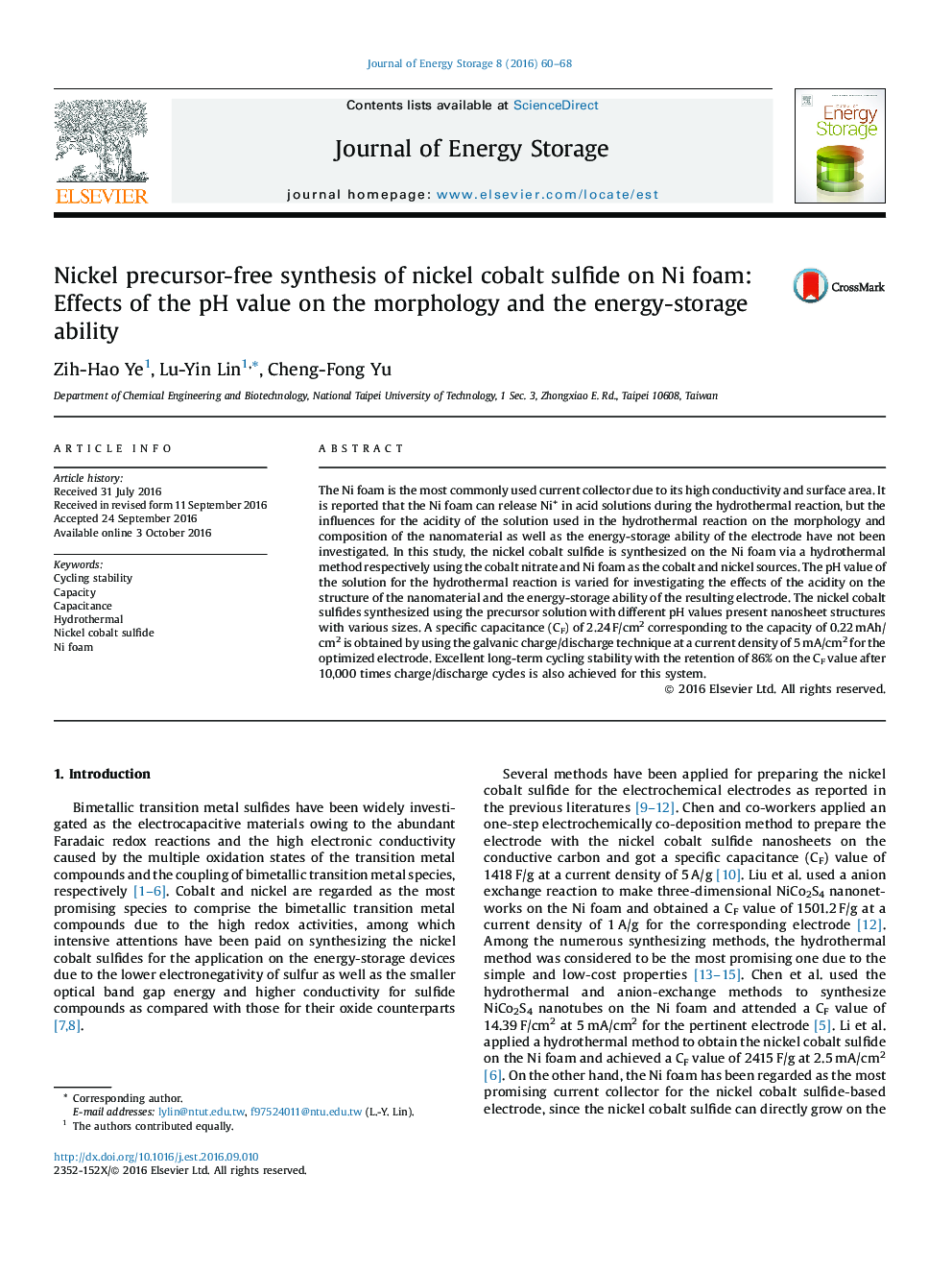| کد مقاله | کد نشریه | سال انتشار | مقاله انگلیسی | نسخه تمام متن |
|---|---|---|---|---|
| 5127369 | 1489014 | 2016 | 9 صفحه PDF | دانلود رایگان |

- Nickel cobalt sulfide are made on the Ni foam via a one-step hydrothermal method.
- The cobalt nitrate and the Ni foam are respectively the cobalt and nickel sources.
- The pH value of the hydrothermal solution is varied to make nickel cobalt sulfide.
- Morphology of nickel cobalt sulfide and supercapacitor performance were discussed.
- A specific capacitance of 2.24Â F/cm2 is obtained at a current density of 5Â mA/cm2.
The Ni foam is the most commonly used current collector due to its high conductivity and surface area. It is reported that the Ni foam can release Ni+ in acid solutions during the hydrothermal reaction, but the influences for the acidity of the solution used in the hydrothermal reaction on the morphology and composition of the nanomaterial as well as the energy-storage ability of the electrode have not been investigated. In this study, the nickel cobalt sulfide is synthesized on the Ni foam via a hydrothermal method respectively using the cobalt nitrate and Ni foam as the cobalt and nickel sources. The pH value of the solution for the hydrothermal reaction is varied for investigating the effects of the acidity on the structure of the nanomaterial and the energy-storage ability of the resulting electrode. The nickel cobalt sulfides synthesized using the precursor solution with different pH values present nanosheet structures with various sizes. A specific capacitance (CF) of 2.24Â F/cm2 corresponding to the capacity of 0.22Â mAh/cm2 is obtained by using the galvanic charge/discharge technique at a current density of 5Â mA/cm2 for the optimized electrode. Excellent long-term cycling stability with the retention of 86% on the CF value after 10,000 times charge/discharge cycles is also achieved for this system.
245
Journal: Journal of Energy Storage - Volume 8, November 2016, Pages 60-68